“Aluminum Hydroxide 250gm” has been added to your cart. View cart
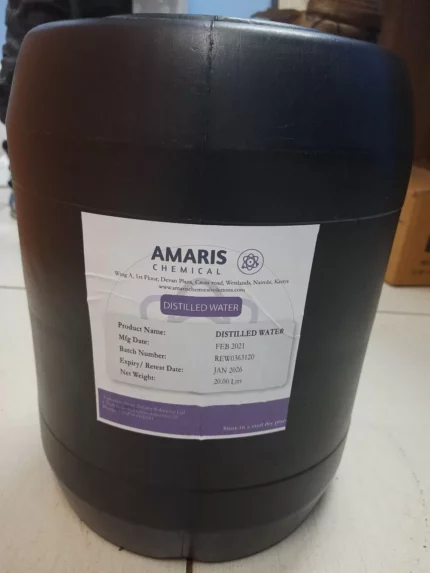
Distilled Water
$900.00 Original price was: $900.00.$850.00Current price is: $850.00.
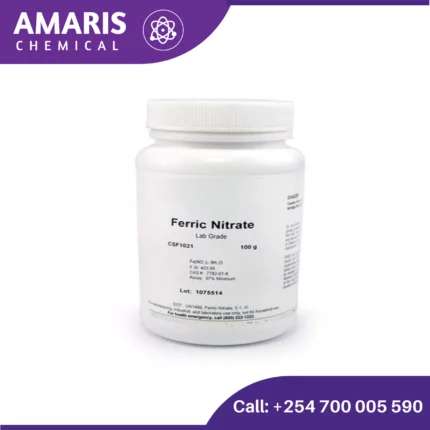
Ferric Nitrate 500gm
$2,300.00 Original price was: $2,300.00.$2,200.00Current price is: $2,200.00.
Fehling Solution 1 and 2
$4,500.00 Original price was: $4,500.00.$4,000.00Current price is: $4,000.00.
Whatsapp Order
Fehling’s solution is used in chemistry to detect the presence of reducing sugars. It is composed of two separate solutions that are mixed in equal volumes just before use.
Fehling’s Solution 1
- Composition: This solution contains copper(II) sulfate (CuSO₄).
- Appearance: It is a deep blue solution.
- Preparation: Typically prepared by dissolving copper(II) sulfate in water.
Fehling’s Solution 2
- Composition: This solution contains a mixture of potassium sodium tartrate (Rochelle salt) and sodium hydroxide (NaOH).
- Appearance: It is a clear, colorless solution.
- Preparation: Potassium sodium tartrate and sodium hydroxide are dissolved in water.
SKU:
ACS85434CHEM0
Category: Analytical Reagents
Description
Table of Contents
ToggleUses of Fehling Solution 1 and 2
Detection of Reducing Sugars
Fehling’s solutions are commonly used to test for the presence of reducing sugars in various samples, such as:
- Food Products: To identify the presence of sugars like glucose and fructose in foods and beverages.
- Biological Samples: To detect reducing sugars in blood or urine samples, which can be important for diagnosing conditions like diabetes.
- Chemical Research: In organic chemistry labs to analyze carbohydrates and other compounds.
Distinguishing Aldehydes from Ketones
Fehling’s solutions are used to differentiate between aldehydes and ketones:
- Aldehydes: These will react with Fehling’s solution, reducing the copper(II) ions to copper(I) oxide, resulting in a red precipitate.
- Ketones: These generally do not react with Fehling’s solution, so no color change occurs.
Educational Demonstrations
- Teaching Tool: Fehling’s solutions are often used in educational settings to demonstrate redox reactions and the properties of reducing sugars.
Quality Control in Manufacturing
- Food and Beverage Industry: Used to monitor sugar content in products.
- Pharmaceuticals: To ensure the purity and composition of certain medicinal preparations.
Analytical Chemistry
- Qualitative Analysis: Used in analytical chemistry for qualitative tests to identify the presence of specific functional groups or compounds.
Reviews (0)
Be the first to review “Fehling Solution 1 and 2” Cancel reply
Related products
Aluminum Ammonium Sulphate
Aluminum ammonium sulfate, also known as ammonium alum or just alum, is a chemical compound with the formula (NH4)Al(SO4)2·12H2O. It's a white crystalline solid commonly used in water purification, leather tanning, and as a mordant in dyeing textiles.
In water purification, alum acts as a coagulant to remove impurities by causing suspended particles to clump together, making it easier for filtration to remove them. In leather tanning, it helps to stabilize the leather by tightening the collagen fibers. And in dyeing textiles, alum helps the dye adhere to the fabric.
However, it's important to note that excessive exposure to aluminum compounds like alum can be harmful, so it's typically used with caution and proper safety measures.
Aluminum Carbonate 250g
Aluminum carbonate is a chemical compound with the formula Al2(CO3)3. It is a white, crystalline solid that is insoluble in water. Aluminum carbonate is not commonly encountered in pure form due to its high instability, especially in the presence of water and carbon dioxide. Instead, it tends to decompose into aluminum hydroxide and carbon dioxide when exposed to moisture or acidic conditions.
Ammonia Acetate
Ammonium acetate (NH4C2H3O2) is a chemical compound with various applications and properties. Here are some key points about it:
Properties
- Chemical Formula: NH4C2H3O2
- Molecular Weight: 77.08 g/mol
- Appearance: White, crystalline solid
- Solubility: Highly soluble in water
- Melting Point: Decomposes upon heating
Ammonium Ferrous Sulphate 500gm
Ammonium Nitrate 500gm
Ammonium Sulphate 500gm
Sodium sulphate 25kg
Sodium Thiosulphate 25kg
Sodium thiosulfate (Na2S2O3) is an inorganic compound that is commonly used as a photographic fixer, as well as in medical and industrial applications. It is a white crystalline powder that is soluble in water and has a mild odor. In photography, sodium thiosulfate is used to remove unexposed silver halide from photographic prints and negatives, making the image permanent. In medicine, it is used as an antidote for cyanide poisoning, and in industrial applications, it is used as a reducing agent, a dechlorinating agent, and in water treatment processes.


 Emollients
Emollients Humectants
Humectants UV Filters
UV Filters Surfactants (cosmetic)
Surfactants (cosmetic) Preservatives (cosmetic)
Preservatives (cosmetic) Fragrances and Essential Oils
Fragrances and Essential Oils Antioxidants (cosmetics)
Antioxidants (cosmetics)
 Solvents (lab)
Solvents (lab) Chromatography Chemicals
Chromatography Chemicals Microbiology and Cell Culture Reagents
Microbiology and Cell Culture Reagents Biochemical Reagents
Biochemical Reagents Inorganic and Organic Standards
Inorganic and Organic Standards LABORATORY EQUIPMENT & APPARATUS
LABORATORY EQUIPMENT & APPARATUS Spectroscopy Reagents
Spectroscopy Reagents Molecular Biology Reagents
Molecular Biology Reagents
 Precious Metal Extraction Agents
Precious Metal Extraction Agents
 Plasticizers
Plasticizers Polymerization Initiators
Polymerization Initiators Stabilizers
Stabilizers Monomers
Monomers Fillers and Reinforcements
Fillers and Reinforcements Antioxidants (plastics)
Antioxidants (plastics) Colorants (plastic pigments,Dyes)
Colorants (plastic pigments,Dyes)
 Fertilizers
Fertilizers Plant Growth Regulators
Plant Growth Regulators Soil Conditioners
Soil Conditioners Animal Feed Additives
Animal Feed Additives Biostimulants
Biostimulants
 Dough Conditioners
Dough Conditioners Flour Treatments
Flour Treatments Fat Replacers
Fat Replacers Preservatives (baking)
Preservatives (baking)
 Surfactants (cleaning)
Surfactants (cleaning) Builders
Builders Bleaching Agents
Bleaching Agents Enzymes
Enzymes Solvents (cleaning)
Solvents (cleaning) Fragrances
Fragrances Disinfectant
Disinfectant Metal cleaning
Metal cleaning
 Binders/Resins
Binders/Resins Pigments
Pigments Solvents (paint)
Solvents (paint) Additives
Additives Driers
Driers Anti-Corrosion Agents
Anti-Corrosion Agents Specialty Coatings
Specialty Coatings Functional Coatings
Functional Coatings Application-Specific Coatings
Application-Specific Coatings
 Sealants and Adhesives
Sealants and Adhesives
 Biodegradable Surfactants
Biodegradable Surfactants Bio-based Solvents
Bio-based Solvents Renewable Polymers
Renewable Polymers Carbon Capture Chemicals
Carbon Capture Chemicals Wastewater Treatment Chemicals
Wastewater Treatment Chemicals
 Preservatives (food)
Preservatives (food) Flavor Enhancers
Flavor Enhancers Acidulants
Acidulants Sweeteners
Sweeteners Emulsifiers
Emulsifiers Antioxidants (food)
Antioxidants (food) Colorants (food)
Colorants (food) Nutrient Supplements
Nutrient Supplements Nutraceutical Ingredients
Nutraceutical Ingredients
 Fresh Herbs
Fresh Herbs Whole Spices
Whole Spices Ground Spices
Ground Spices Spice Blends
Spice Blends
 Surfactants(oil)
Surfactants(oil)
 Antibiotics
Antibiotics Active Pharmaceutical Ingredients
Active Pharmaceutical Ingredients Excipients
Excipients Vaccine Adjuvants
Vaccine Adjuvants Nutraceutical Ingredients
Nutraceutical Ingredients Solvents (pharmaceutical)
Solvents (pharmaceutical)
 Automotive chemicals
Automotive chemicals Pyrotechnic Chemicals
Pyrotechnic Chemicals




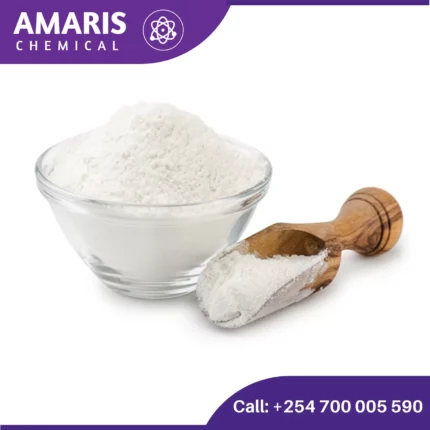






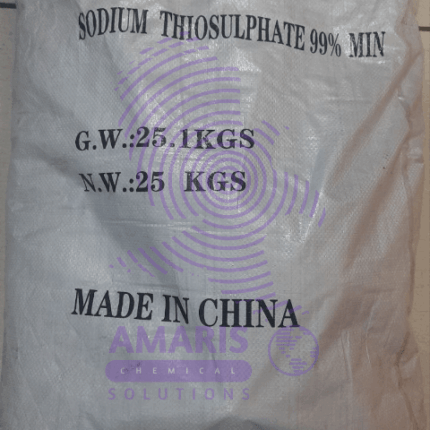
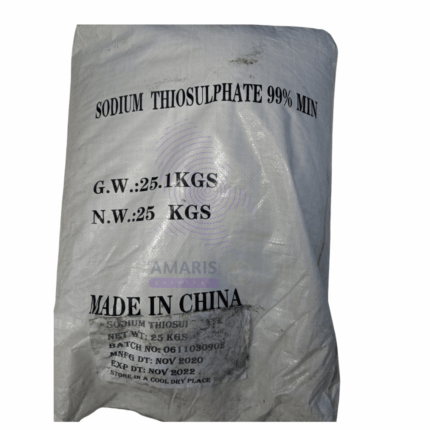













Reviews
There are no reviews yet.